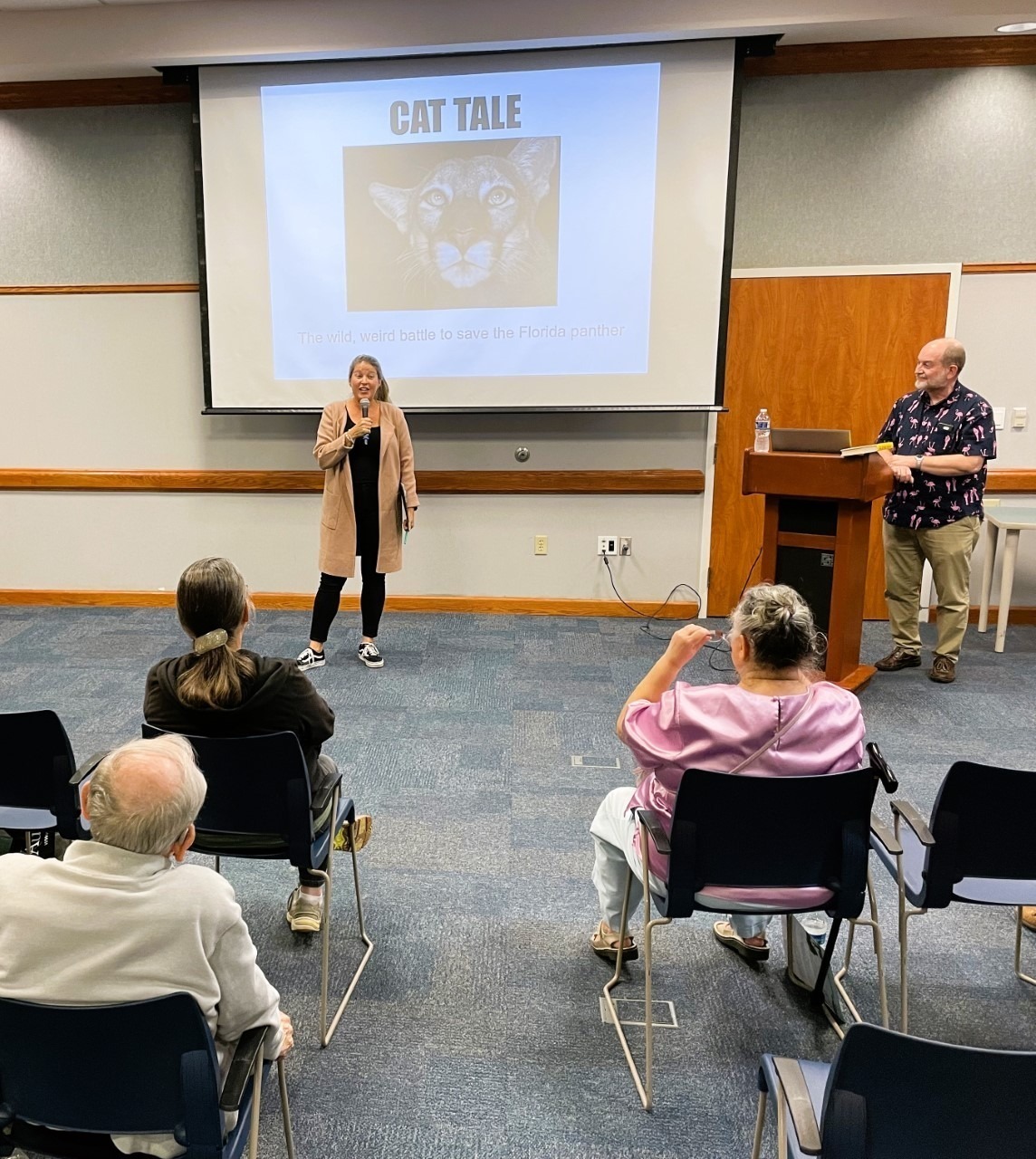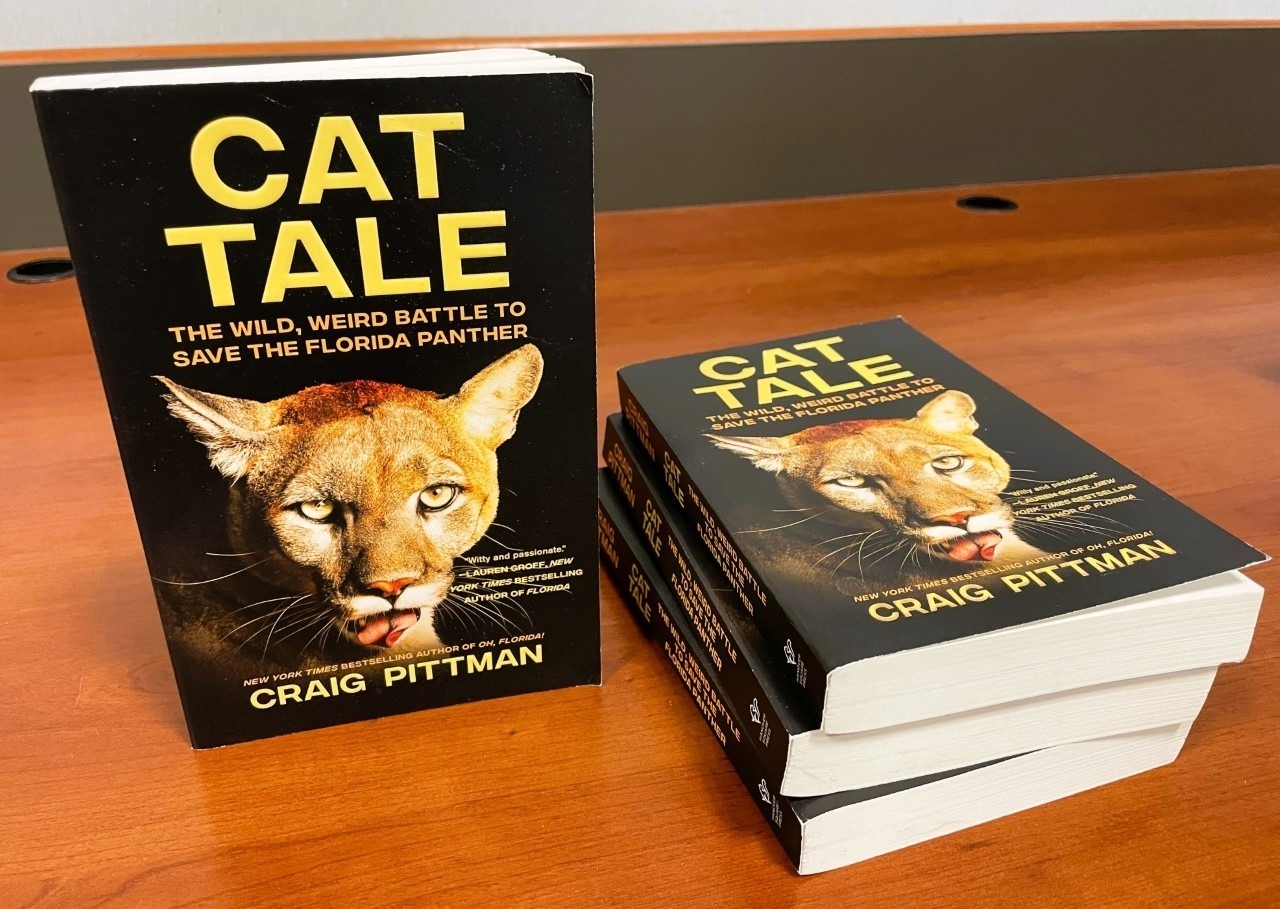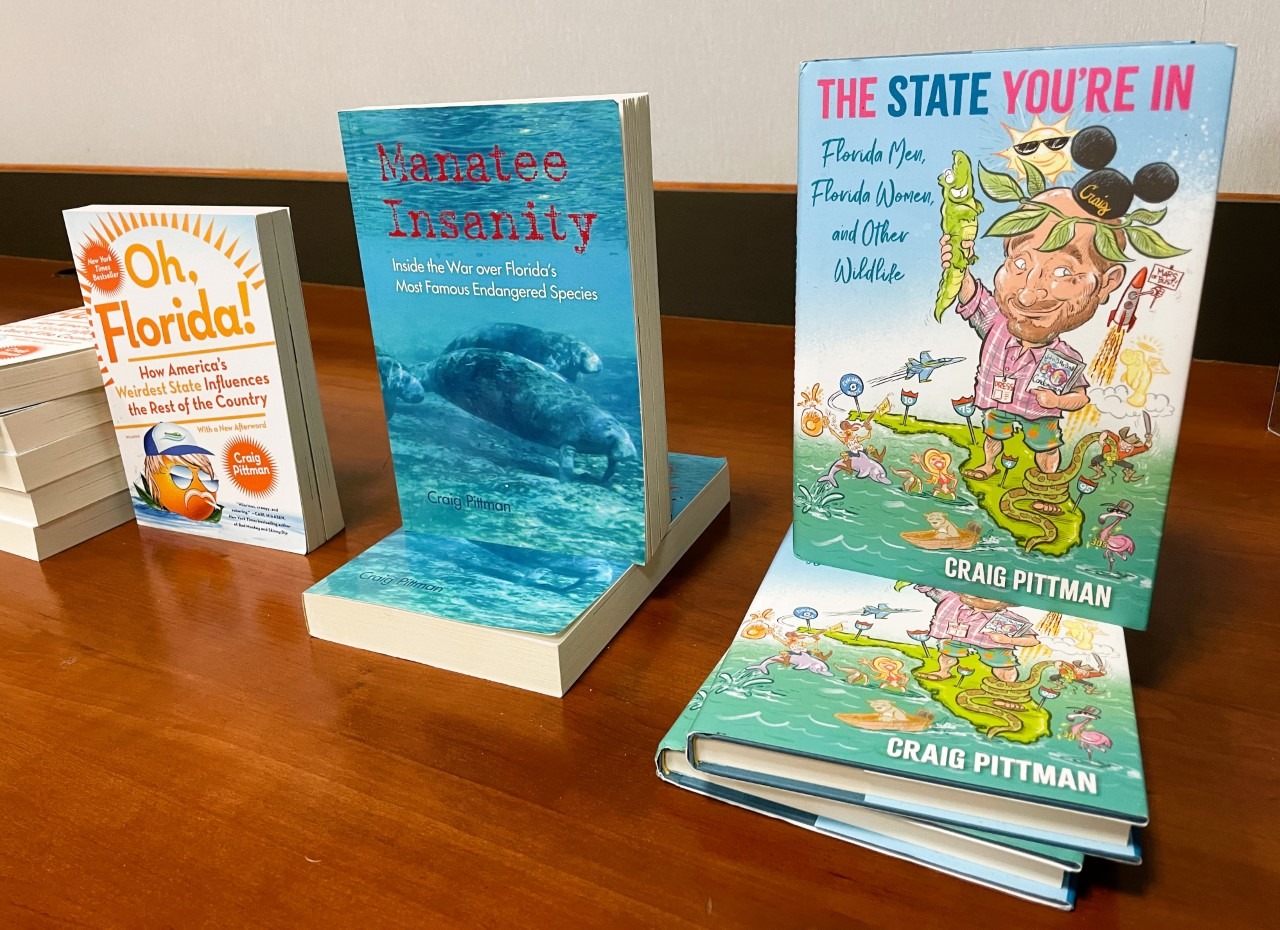by James Coulter
Once considered extinct, the Florida panther population has since rebounded. One local journalist and author chronicled the effort to repopulate the species. His story involves everything from roadside zoos, radio collars, underpass cameras, and even the infamous Skunkman.

Craig Pitmann, former Tampa Bay Times journalist and columnist, served as a guest speaker at a lecture hosted at the Winter Haven Public Library on Tuesday evening as part of its “Our Florida: Lecture Series.”
Pitmann discussed his latest book, Cat Tale, the Wild Weird Battle to Save The Florida Panther, which—true to its title—accounts the half-century-long environmental struggle to save the Florida panthers.

The Florida panther has resided in Florida long before being discovered by Spanish explorers. Native Americans worshipped them as the “Cat of God”, and a figurine named the “Key Marco Cat” from the Calusa tribe was discovered by archeologists.
Spanish settlers referred to these creatures as lions and catamounts. Many stories were told about encounters with these wild animals. One story involved a pregnant settler woman stripping naked and tossing her clothes at a panther chasing her to her house.
“At least that’s the story to tell her husband about why she was naked when he returned home,” Pitmann said.
During the early 1900s, one of the first people to capture a wild panther was Charles Coy, whom Pitmann refers to as a “playboy scientist” and “the original Tony Stark.” He and his team traveled to Florida in a 90-foot sailboat and caught one in a tree.
Since then, the Florida Panther would be pursued by many hunters wanting to catch “the ultimate prey.” By 1958, the panthers had been hunted so extensively that state officials halted further panther hunts.
By the 1970s, their numbers in the wild had dwindled. These wild cats could only be seen in roadside attractions like Everglades Wonder Gardens in Bonita Springs, which donated a few to Everglades National Park. In 1973, they were once of the first animals placed on the Endangered Species List. Some state officials even declared them extinct.
However, hope for the panther population was reignited when a Texas hunter, Roy McBride, found one female panther and signs there were more during a search. Biologist Chris Belden was also commissioned to find more wild panthers, and his search became known statewide.
Upon hearing these stories, Floridians became reinterested in their state’s panthers. In fact, the animal was voted by schoolchildren to become the official state animal even over the alligator.
Initially, Belden and his team attempted to track wild panthers using radio collars. However, some of the batteries ran dead. During an attempt to retrack these creatures, one panther was shot and killed through an overdose from a tranquilizer. The news created an uproar and a public backlash against panther science.
Further complicating matters was the discovery than many of these panthers had genetic defects including kinks in their tails, holes in their hearts, and reproductive problems. Their numbers were so low that the few remaining panthers were inbreeding. As such, the rush to captive-breed these animals were blocked by an animal activist lawsuit.
Meanwhile, the panther population was being further endangered due to rapid development destroying their natural habitats. The government was approving permits using junk science claiming the panther population was fine. One whistleblower exposed their dirty tactics, which helped bring a halt to these permits.
The only solution left was genetic augmentation. Other cougar species would be brought in to breed with the Florida panthers and repopulate. Roy McBride was commissioned to capture eight female mountain lions and bring them back to Florida. Pittman recalled an interview with McBride about his endeavors, and what he received was a hilarious anecdote.
“He had a story, and when he was done telling it, I was down on the floor laughing,” Pittman said. “All I will tell you is that it involves a blindfold and mule.”
Pitmann reveals more about the history of the Florida Panthers and the efforts to save them in his book. He mentions his book includes other interesting anecdotes, some involving the infamous Bigfoot-like cryptid Skunkman and even a man dressed up in a monkey suit photographed by an underpass camera.
A native Floridian born in Pensacola, Pitmann has 31 years of experience working as a journalist and columnist for the Tampa Bay Times. He currently runs the podcast “Welcome to Florida” and has written other non-fiction books about the state, including “The Scent of Scandal: Greed, Betrayal, and the World’s Most Beautiful Orchid.”
During his question-and-answer segment, he assured attendees that panthers lived in Polk County, and that their favorite prey of choice were deer. As he said, “Panthers are to deer what I am to barbecue: they chomp every bit that they can.”
Pitmann was impressed by the number of people who attended his lecture that evening. He wants his readers to understand the hard work that occurred to help save the Florida panthers, and how the people responsible were not officials, but rather, working-class people.
“I am happy with how many people are interested in the subject, and if politicians understood how important environmental issues are to the general public, they would pay more attention,” he said.

Cat Tale: The Wild, Weird Battle to Save the Florida Panther is available on Amazon and other websites. For more information, visit https://craigpittman.com/
For more information on the library lecture series, visit: https://www.mywinterhaven.com/library/ourflorida/


